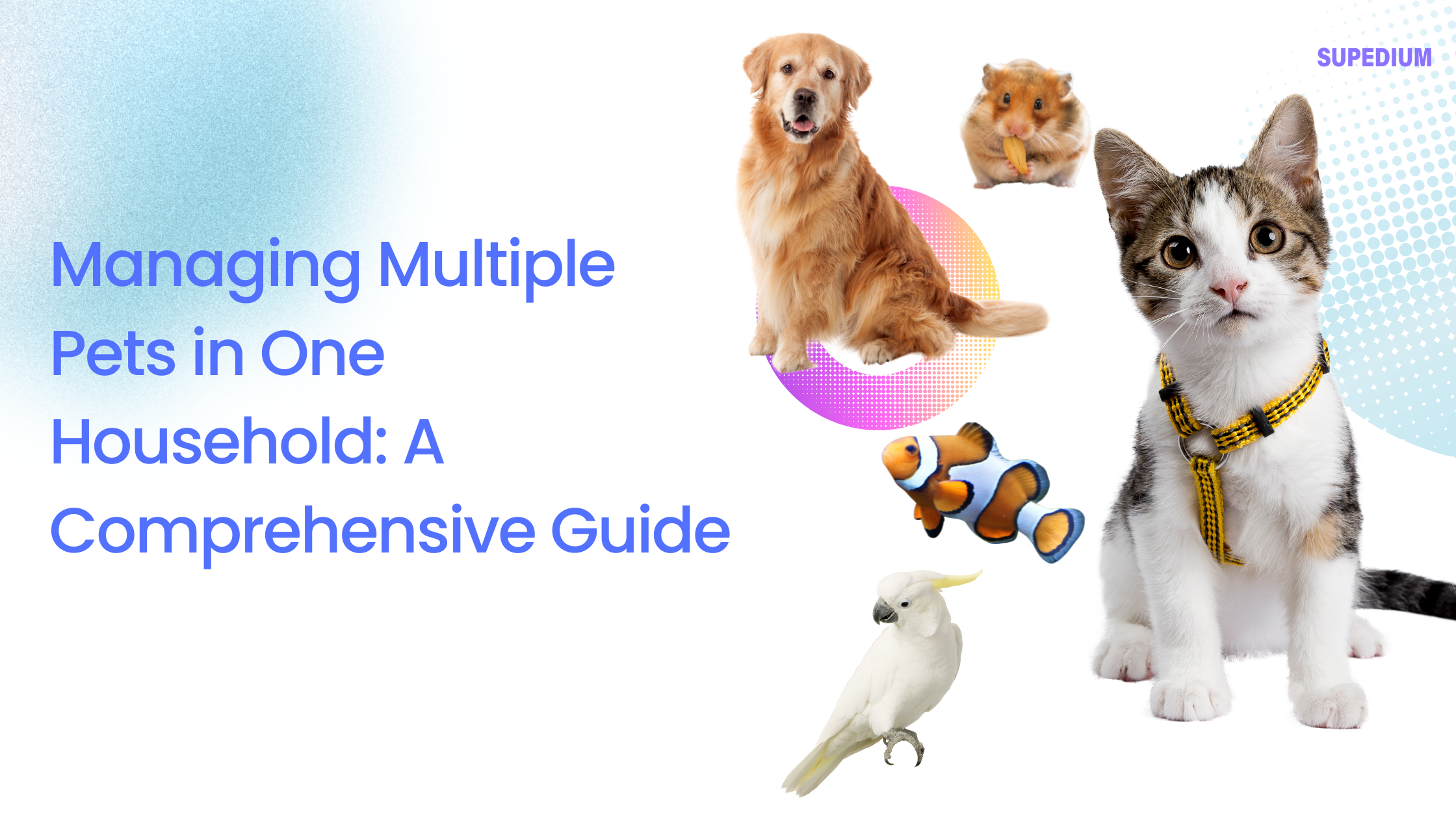Table of Contents
![]()
Introduction
Managing multiple pets in a single household offers a unique blend of challenges and rewards. While the companionship and joy of having various animals can be immensely fulfilling, it also requires careful planning and management to ensure that each pet’s needs are met and that harmony is maintained within the home. This guide aims to provide practical strategies for effectively managing a multi-pet household, ensuring the well-being and happiness of all animals involved.
Preparation Before Adding a New Pet
Assessing Household Dynamics
Before introducing a new pet to your household, it’s essential to assess the dynamics of your existing pets. Consider their temperament and health, as well as the resources available in your home. Evaluate whether your current pets are likely to accept a new member and whether you have the space and time to accommodate another animal.
Research and Selection
Choosing the right pet is crucial. Research various breeds and species to determine which would be a good fit for your current pets and living situation. Factors to consider include the new pet’s age, energy levels, and social needs. For instance, a high-energy dog might require more exercise and interaction than a low-energy cat.
Preparing the Home
Preparation is key to a smooth transition. Create safe spaces and zones where pets can feel secure. Ensure you have all necessary supplies, such as beds, toys, and food bowls. Having designated areas for each pet can help minimize territorial disputes and promote a sense of stability.
Introduction and Socialization
Gradual Introduction Techniques
Introducing a new pet to existing ones should be a gradual process. Begin by swapping scents between pets to familiarize them with each other. This can be done by rubbing a cloth on one pet and then placing it with the other. Follow this with controlled meetings in neutral spaces where pets can see each other without feeling threatened.
Observing Body Language
Monitor each pet’s body language during introductions. Signs of stress or aggression, such as growling, hissing, or cowering, should be taken seriously. Conversely, positive social interactions, such as relaxed body posture and friendly behaviors, indicate that the introduction is progressing well.
Training and Behavior Management
Establish basic commands and use consistent training methods to help all pets adjust to the new dynamic. Positive reinforcement, such as treats and praise, can encourage good behavior and help integrate the new pet into the household smoothly.
Daily Routine and Care
Feeding and Nutrition
Each pet has unique dietary needs that must be addressed. Avoid resource guarding by feeding pets in separate areas and monitoring their interactions around food. Ensuring that all pets have their own food and water bowls can help reduce conflicts.
Exercise and Mental Stimulation
Exercise and mental stimulation are essential for all pets. Engage in group play when appropriate, but also provide individual activities to cater to each pet’s needs. Enrichment activities, such as puzzle toys and interactive games, can help keep pets mentally and physically stimulated.
Health and Hygiene
Regular veterinary check-ups are crucial for maintaining each pet’s health. Develop a grooming routine tailored to each pet’s specific needs, whether it involves brushing, bathing, or trimming. Keeping pets clean and healthy contributes to their overall well-being and reduces the likelihood of health issues.
Space and Resource Management
Personal Space for Each Pet
Designated personal spaces for eating, sleeping, and playing can help prevent territorial disputes. Each pet should have a space where they can retreat and feel safe, reducing stress and potential conflicts.
Sharing Resources
Managing shared resources, such as toys and bedding, requires careful planning. Ensure that each pet has access to their own resources, and monitor interactions to prevent conflicts over shared items. Rotate toys and other items to keep pets engaged and reduce the likelihood of disputes.
Conflict Prevention
Observe interactions among pets and address conflicts promptly. Implement strategies to manage aggression or anxiety, and consider using calming products or behavior modification techniques if necessary. Ensuring that all pets feel secure and valued is crucial for maintaining harmony.
Behavioral Issues and Solutions
Common Behavioral Problems
Multi-pet households may experience specific behavioral issues, such as territorial aggression or anxiety. Understanding these common problems and addressing them promptly can prevent escalation and ensure a harmonious environment.
Intervention Strategies
Behavior modification techniques, such as desensitization and counter-conditioning, can help address behavioral issues. In some cases, seeking professional help from trainers or behaviorists may be necessary to resolve more complex problems.
Monitoring and Adjustment
Regularly assess each pet’s behavior and adjust management strategies as needed. Continuously monitoring interactions and being proactive in addressing issues will help maintain a balanced and peaceful household.
Emergency Preparedness
Health Emergencies
Prepare for health emergencies by having basic first aid knowledge and supplies. Keep a list of emergency contacts, including your veterinarian and local animal hospitals, readily accessible.
Natural Disasters and Evacuations
Create a pet emergency kit containing essential items such as food, water, medications, and identification tags. Develop an evacuation plan that includes provisions for all pets, ensuring their safety in the event of a natural disaster.
Legal and Ethical Considerations
Legal Requirements
Adhere to local pet ownership laws and regulations, which may include licensing, microchipping, and registration requirements. Staying informed about legal obligations helps ensure compliance and the well-being of your pets.
Ethical Responsibility
Being a responsible pet owner involves more than just meeting legal requirements. It includes providing proper care, addressing overpopulation concerns through spaying and neutering, and ensuring that each pet’s needs are met with compassion and dedication.
Case Studies and Real-Life Examples
Success Stories
Explore case studies of multi-pet households that have successfully managed multiple animals. Learn from their experiences and strategies, which can offer valuable insights and inspiration for your own household.
Lessons Learned
Analyze challenges faced by multi-pet households and the solutions they implemented. These lessons can provide practical advice and help you navigate potential difficulties in managing multiple pets.
Conclusion
Managing multiple pets in a household requires careful planning, ongoing attention, and a commitment to each pet’s well-being. By preparing adequately, introducing pets gradually, maintaining a structured routine, and addressing behavioral issues, you can create a harmonious environment where all pets thrive. Embrace the joys and challenges of multi-pet ownership, and remember that with thoughtful management, your home can be a loving and balanced space for all your furry, feathered, or scaly friends.
Share This





Be the first to comment